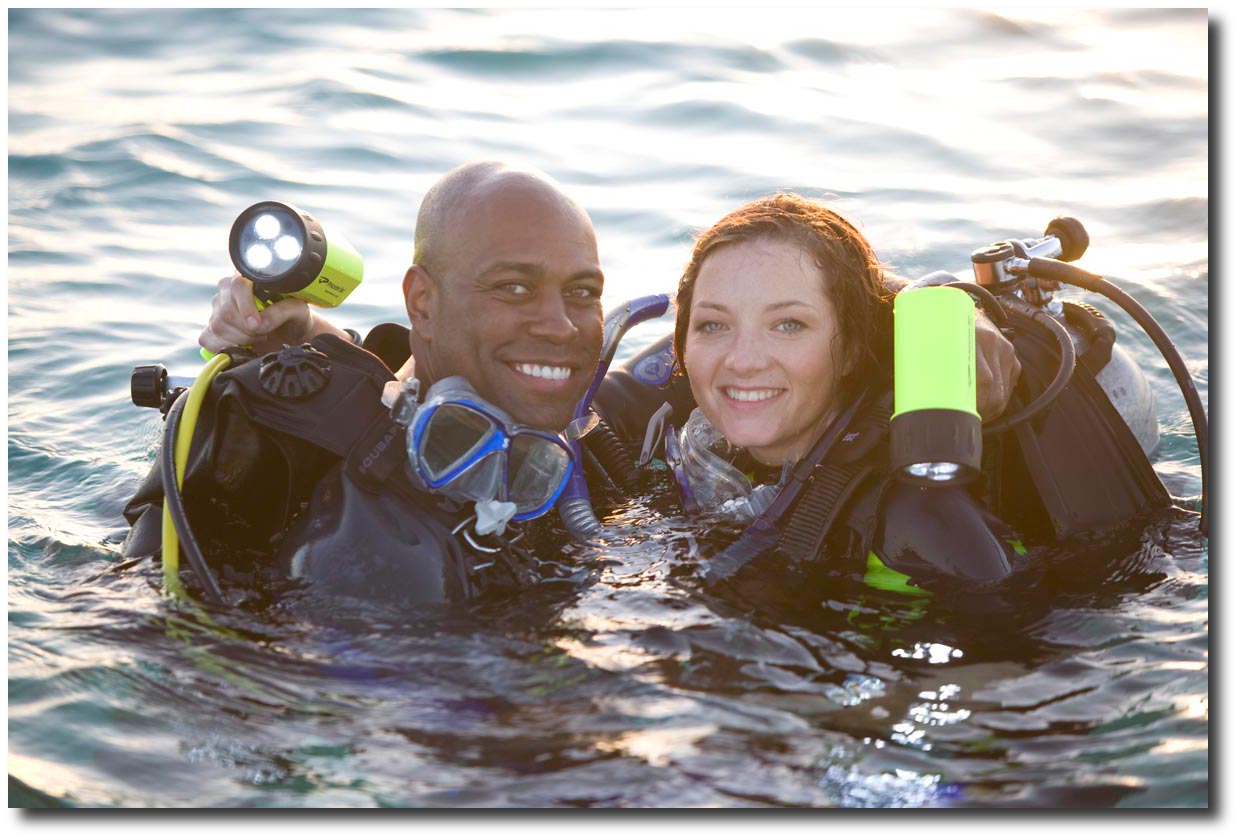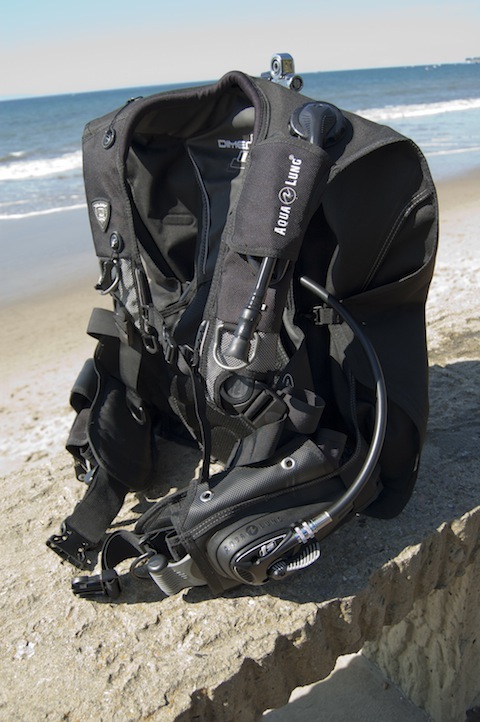Dive training complete. Check.
Check Out dives signed off by instructor. Check.
C-card in hand. Check.

So now that you're a certified beginner diver what do you do next? Stay in the water, of course!
You've invested time and money getting certified plus you love your newfound hobby so why not continue to dive? After all, this is the crucial period that will determine whether you'll keep diving or just have another Done that item to check off your list.
We are assuming you want to stay wet and enjoy the underwater world so; the next step is to gear up!
Let's face it diving isn't cheap and neither is the gear so what is a beginner supposed to do? Most new divers buy mask, fins and snorkel then just rent their other gear but that can stack up to a lot of wasted cash on gear that doesn't fit or work well, has been used by God knows who, and we are pretty sure that smell isn't the ocean.
Best way to ensure your comfort, safety and convenience is to start investing beyond a mask, fins and snorkel in your own gear and you start with the wetsuit.
The Wetsuit

The most important and personal piece of gear you will EVER own (trust us). A proper wetsuit is supposed to act as a second skin while keeping you warm and comfy in the water.
Just like Goldie Locks your wetsuit should fit just right. A suit that is too tight will make it hard for you to move and breathe properly and a suit that is too loose will make sure you can't feel your fingers from the cold.
Your best bet is to buy your own wetsuit and you should buy it in person to ensure it hugs (and lets loose) in all the right places! Also, keep in mind where you dive as water temperatures can help you determine how thick or light a suit should be or if more than one is needed.
The Regulator with Instrument Console
Now that you are all suited up your next piece of gear should be your regulator with an instrument console.
Who wants to use gear that has been drooled all over by countless others, not to mention the fact that you aren't sure how well its been cleaned or when was the last time it received maintenance.
Your regulator system includes a first stage, a primary second stage, a back-up second stage or octopus, and an instrument console with a dive computer to measure depth, air consumption and inform you of your dive profile for safety. This is the heart of your life support system, so you can dive happily knowing your regulator is properly adjusted, up to date with its service, and who the last person to use it was.
The BC

Of course, we all know you need some sort of buoyancy in the water because who wants to constantly fight rising or sinking as you enjoy the sights of the ocean? Your next piece of equipment should be the Buoyancy Compensator.
We placed this one at #3 because you can rent it easily and comfortably so long as you pick up the right size for you. So, it can wait til you've got your own wetsuit and reg.
The key to picking the right regulator is size and (like a wetsuit) keep in mind where you will be diving.
Your BC will be the center of your dive rig; it's what everything connects to and it allows you to fine-tune your dive set-up, which adds up to a more pleasurable experience.
All the Rest
After you've got your fins wet and your basic gear you will probably want more equipment as an avid diver. Your own tank, weights, underwater light, extra dive wrist computer, booties, gloves, safety sausage, accessories like a ScubaDoRag and dive bag to hold it all together come with time as the need for it grows.
For Scuba Gear Reports full detailed article on Buying Your First Set of Dive Gear click here.

Recent Posts
- Finding the Right Dive Resort For Your Vacation
- Luxury Dive Resorts That Offer Unforgettable Experiences
- Eastern Malaysia, Sabah, Sipadan & More
- Ghost Pipefish, Pipefish, Seahorses, and Sea Dragons
- Australia Queensland and the Great Barrier Reef
- Tioman Islands, Malaysia
- The Riviera Maya
- The Peter Diving System
- The Bay Islands, Roatan, Utila, Guanaja, and more.
- The Cuttlefish; The Undisputed Master of Camouflage.
Categories
- Australia
- Bahamas
- Bay Islands
- Belize
- Blue Hole
- Bonaire Diving
- Borneo
- Cayman Brac
- Cayman Islands
- Cozumel
- Curacao
- Cuttlefish
- Dive Destinations
- Dive Equipment
- Dive Liveaboards
- Dive Resorts / Properties
- Dive Travel
- Dive Travel Deals
- Diver Wellness
- Dolphins
- Dominica
- Eagle Rays
- eagle rays
- Family Travel
- Fiji
- Galapagos Islands
- Great White Shark cage diving
- Guanaja
- Honduras
- Indonesia
- Infographics
- Isla Mujeres
- Learning to Dive
- Little Cayman
- Maduro Dive Newsletter
- Malaysia
- Maldives
- Manta Rays
- Marine Life
- Mexico
- Micronesia
- Muck Diving
- Myamar
- Palau
- Papua New Guinea
- Pelagics
- Philippines
- Pinnacles
- Polynesia
- Reefs
- Riviera Maya
- Roatan
- Saba
- Sabah
- Scuba Diving
- Scuba Gear Reviews
- Scuba News/Events
- Scuba Training & Education
- Sea Legends
- sea lions
- Sea of Cortez
- Sharks
- Single Travel
- Sipadan
- Socorro Islands
- South Africa
- Specialties
- ST. Kitts
- Stingrays
- Tahiti
- Thailand
- The Bucket List
- Tobago
- Truk Lagoon (Chuuk)
- Turks and Caicos Islands
- Turtles
- Uncategorized
- Underwater Photography
- Underwater Video
- Utila
- Walls
- Whale Sharks
- Whales
- Wreck Diving
- Wrecks
- Yap
Archives
- June 2025
- January 2024
- April 2023
- March 2020
- March 2019
- January 2019
- November 2018
- September 2018
- July 2018
- May 2018
- March 2018
- January 2018
- October 2017
- September 2017
- June 2017
- April 2017
- February 2017
- January 2017
- October 2016
- August 2016
- July 2016
- May 2016
- March 2016
- February 2016
- January 2016
- December 2015
- August 2015
- June 2015
- April 2015
- January 2015
- November 2014
- July 2014
- April 2014
- February 2014
- December 2013
- November 2013
- October 2013
- September 2013
- August 2013
- July 2013
- June 2013
- May 2013
- April 2013
- March 2013
- February 2013
- January 2013
- December 2012
- November 2012
- October 2012
- September 2012
- August 2012
- July 2012
- June 2012
- May 2012
- April 2012












